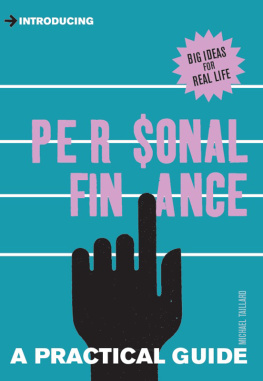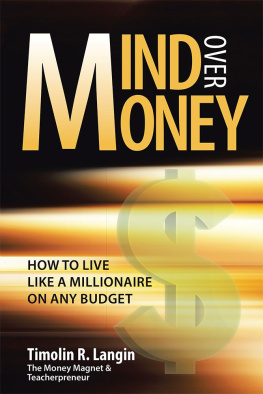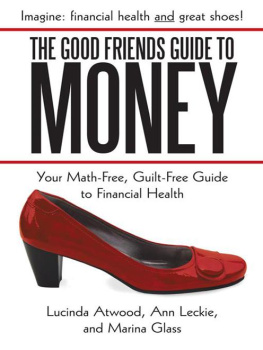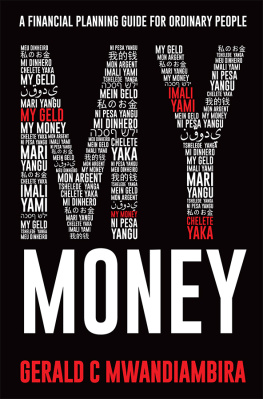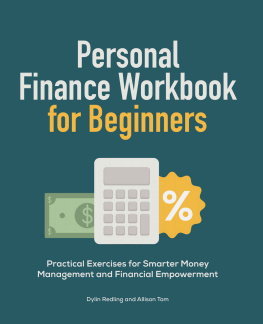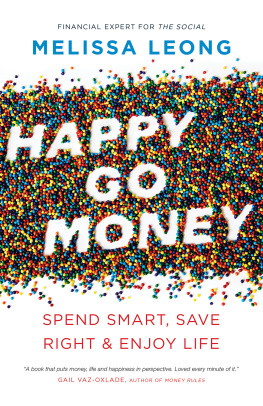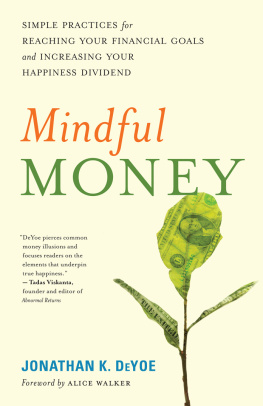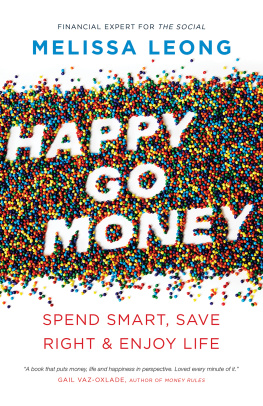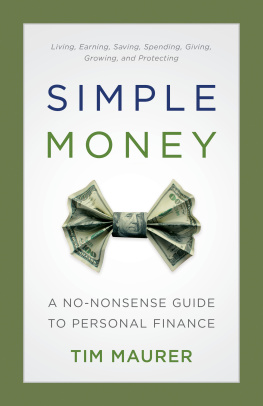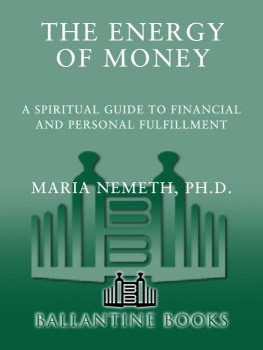Finance Is Personal
MAKING YOUR MONEY WORK FOR YOU IN COLLEGE AND BEYOND
Kim Stephenson and Ann B. Hutchins
Foreword by Steven G. Blum

Copyright 2015 by Kim Stephenson and Ann B. Hutchins
All rights reserved. No part of this publication may be reproduced, stored in a retrieval system, or transmitted, in any form or by any means, electronic, mechanical, photocopying, recording, or otherwise, except for the inclusion of brief quotations in a review, without prior permission in writing from the publisher.
Library of Congress Cataloging-in-Publication Data
Stephenson, Kim.
Finance is personal: making your money work for you in college and beyond/Kim Stephenson and Ann B. Hutchins; foreword by Steven G. Blum.
pages cm
Includes bibliographical references and index.
ISBN 9781440834363 (hard copy: alk. paper) ISBN 9781440834370 (ebook) 1. College studentsFinance, Personal. 2. Budgets, Personal. I. Hutchins, Ann B. II. Title.
HG179.S834672015
332.024dc232015009780
ISBN: 9781440834363
EISBN: 9781440834370
19 18 17 16 151 2 3 4 5
This book is also available on the World Wide Web as an eBook.
Visit www.abc-clio.com for details.
Praeger
An Imprint of ABC-CLIO, LLC
ABC-CLIO, LLC
130 Cremona Drive, P.O. Box 1911
Santa Barbara, California 93116-1911
This book is printed on acid-free paper 
Manufactured in the United States of America
Contents
Foreword
My book and my courses all start with a question. Indeed, it is my favorite question in the world, What is a good outcome? Finance Is Personal also starts with a question and it is in the same spirit. Prior to figuring out the how, it is critically important to examine the why.
In that respect, Kim Stephenson and Ann Hutchins have produced a book on personal finance that stands apart from others. Finance Is Personal focuses on good outcomes for each particular person, as distinct from what is a financial win in technical terms that may actually be less than optimal regarding the individuals health, happiness, or well-being.
It is exceptional in another respect. Ive written, lectured, and consulted on the difficulties of getting good advice about personal finance. Among the problems is a pervasive imbalance of information. When one party to a transaction knows a great deal more about the subject than the other, there is the potential for exploitation. Most financial practitioners have command of a great many industry practices and norms that are far beyond the knowledge of even very smart regular people. They also have experience and training in various routines, techniques, and tricks-of-the-trade that give them an enormous advantage over their clients. An economist would describe this as an asymmetry of information between the advisor and the client.
Even the advisor who endeavors to be a true professional (and uses greater knowledge solely to advance the clients interests) is lacking something essential. The expert is without sufficient information about the client. It is only the client who knows those needs, desires, and preferences that will be necessary to craft a specifically good outcome. Here the book opens the most important of doors. Using findings from psychology, neuroscience, and behavioral finance, the authors show how readers can use their unique and extensive knowledge of themselves to determine a range of best possible outcomes in the light of their individual circumstances. Only the individual possesses all the necessary information. Using the insights and exercises in the book, the reader comes to a greater perception of his or her own goals, needs, and desires. Once in possession of this self-understanding, she or he can negotiate the process of financial planning from a position of relative strength.
Many people believe they are effective pursuing their very best outcome already. Some of them are mistaken. They face two significant obstacles. The first is that a focus on external matters of finance will leave them vulnerable to be taken advantage of. As the authors point out, they would be better advised to concentrate first on the particulars of their own situation. After all, who knows more about you than you do?
The second stumbling block is the danger of becoming distracted. Financial education, as typically offered, tends to emphasize technical information. It is sometimes obsessed with particular financial instruments and the mathematics surrounding them. The focus is on what types of investments are available, probabilities of future events, ways to insure against financial calamities, and so on. These nuts and bolts are not sufficiently correlated with where one is trying to go. Indeed, they can easily become a distraction that obscures the more important exploration. What is the individual really trying to achieve? I frequently encounter people who have been encouraged to focus on the minutia of finance rather than the fundamental questions of how best to achieve the good outcomes they desire for themselves.
This book also stands out for the way it addresses the overarching problem of honesty in financial services. This is, of course, a critical question in light of the stakes. The world of finance is both complicated and intimidating, yet it is crucial to so much that we all hold dear. Our comfort, success, retirement, health, and happiness hang in the balance. A significant error can reverberate for a lifetime. It is imperative that we do one of two things: learn for ourselves or find guides who are highly knowledgeable, honest, and trustworthy.
Despite their claims, though, not everyone who makes a living offering financial advice is sufficiently knowledgeable and honest. So the great problem is finding professionals who are worthy of our trust. Finance Is Personal is distinctive for asserting that the search begins with the clients themselves. The authors suggest that the reader is the central figure in any search for trustworthy advice. Their book offers tools for becoming the readers own best guide through the complexities of financial decision making. With singular insight into their own values, desires, and ambitions, they are the truest expert on the proper direction of their financial life. With the proper guidance and training, they will be best equipped to seek out any external guidance needed. The argument, in essence, is that the individual can trust himself or herself. That is the necessary place to start the inquiry.
Anyone can benefit from reading Finance Is Personal. Regardless of age or degree of financial sophistication, something of value is offered to the reader. While the book puts particular emphasis on students, any seeker of knowledge can benefit from the insights, exercises, and wisdom the authors are offering within these pages. Here is an opportunity to build a sound basis upon which to negotiate your way to continuing good outcomes in your financial life.
Steven G. Blum teaches in the Department of Legal Studies and Business Ethics at the Wharton School of Business and is the author of Negotiating Your Investments: Use Proven Negotiation Methods to Enrich Your Financial Life
Preface
This is a book about how you can handle your money in order to get the life you want. When we were mapping it out we aimed to make it really helpfulthe kind of book youd keep referring to and your parents would say I wish Id read that when I was going to college.
When we actually set out to write it, we agreed on many things, but four were key:
Next page

